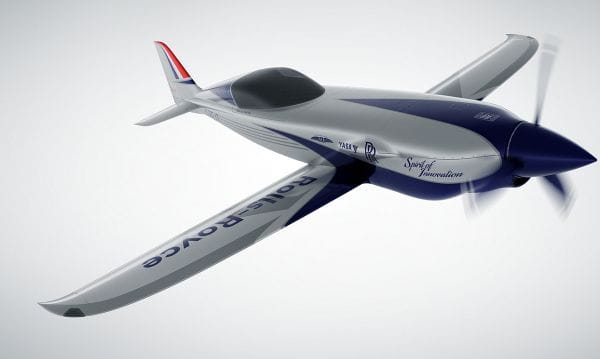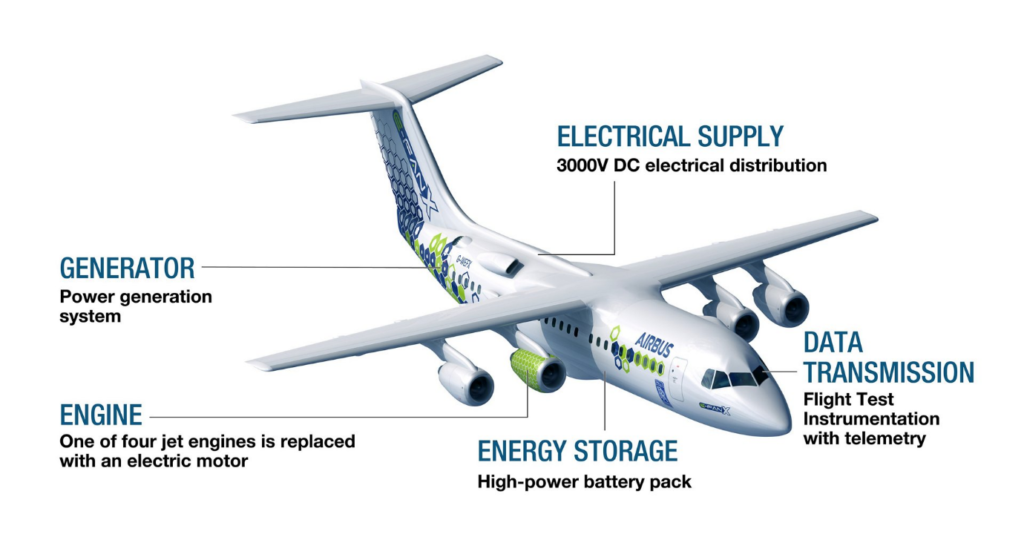Although the title is a play on words, why do we have electric cars and trains, but very few electric aircraft? The main reason is that it’s much easier to modify a car or train, even if they look very similar to traditional fossil-fuel vehicles on the outside.
Land vehicles can easily cope with the extra mass from electricity storage or electrical propulsion systems, but aircraft are much more sensitive.
Increasing the mass of a car by 35% leads to an increase in energy use of 13-20%. But for an aircraft, energy use is directly proportional to mass: increasing its mass by 35% means it needs 35% more energy (all other things being equal).
Aircraft also travel much further than ground vehicles, which means a flight requires far more energy than an average car journey. Aircraft must store all the energy needed onboard to move its mass for each flight (unlike a train connected to an electrical grid). Using a heavy energy source thus means more energy is needed for a flight, which leads to extra mass, and so on and on.
For an aircraft, mass is crucial, which is why airlines fastidiously weigh luggage. Electric aircraft need batteries with enough energy per kilogram of battery, or the mass penalty means they simply can’t fly long distances.
Short-range aircraft
Despite all of this, electric aircraft are on the horizon – but you won’t be seeing an electric Boeing 747 any time soon.
Today’s best available lithium ion battery packs provide around 200 watt-hours (Wh) per kilogram, about 60 times less than current aircraft fuel. This type of battery can power small electric air taxis with up to four passengers over a distance of around 100km. For longer trips, more energy-dense cells are needed.
Short-range electric commuter aircraft that carry up to 30 people for less than 800km, for instance, specifically require between 750 and 2,000Wh/kg, which is some 6-17% of kerosene-based jet fuel’s energy content. Even larger aircraft require increasingly lighter batteries. For example, an aircraft carrying 140 passengers for 1,500km consumes about 30kg of kerosene per passenger. With current battery technology, almost 1,000kg of batteries is needed per passenger.
To make regional commuter aircraft fully electric requires a four-to tenfold reduction in battery weight. The long-term historical rate of improvement in battery energy has been around 3-4% per year, doubling roughly every two decades. Based on a continuation of this historical trend, the fourfold improvement needed for a fully electric commuter aircraft could potentially be reached around mid-century.
While this may seem an incredibly long wait, this is consistent with the timescale of change in the aviation industry for both the infrastructure and aircraft design lifecycles. A new aircraft takes around 5-10 years to design and will then remain in service for two to three decades. Some aircraft are still flying 50 years after their first flight.
Hybrids
While fully electric large aircraft require a major, yet-to-be-invented shift in energy storage, there are other ways to reduce the environmental impact of flying.
Hybrid-electric aircraft combine fuels with electric propulsion. This class of aircraft includes design without batteries, where the electric propulsion system serves to improve the thrust efficiency, reducing the amount of fuel needed.
Hybrid-electric aircraft with batteries are also in development, where the batteries may provide extra power in specific circumstances. Batteries can then, for instance, provide clean take-off and landing to reduce emissions near airports.
Electric aircraft are also not the only way to reduce the direct carbon footprint of flying. Alternative fuels, such as biofuels and hydrogen, are also being investigated.
Biofuels, which are fuels derived from plants or algae, were first used on a commercial flight in 2008 and several airlines have performed trials with them. While not widely adopted, significant research is currently investigating sustainable biofuels that do not impact freshwater sources or food production.
While biofuels do still produce CO₂, they don’t require significant changes to existing aircraft or airport infrastructure. Hydrogen, on the other hand, requires a complete redesign of the fuelling infrastructure of the airport and also has a significant impact on the design of the aircraft itself.
While hydrogen is very light – hydrogen contains three times more energy per kilogram than kerosene – its density is very low, even when stored as a liquid at -250℃. This means that fuel can no longer be stored in the wing but needs to be moved to relatively heavy and bulky tanks inside the fuselage. Despite these drawbacks, hydrogen-fuelled long-distance flights can consume up to 12% less energy than kerosene.
Latest News
Rolls Royce ACCEL
Inside a bustling hangar bay at the far end of Gloucestershire airport in South West England, a team of British engineers, designers, and data specialists recruited from across Rolls-Royce and beyond have set out to make history.
They’re building a high-performance electric aeroplane unlike anything the world has ever seen. Scheduled to take to the skies over Great Britain in 2020, the aircraft will reach a speed of 300mph – and quite likely more – making it the fastest all-electric plane in history.
This run for the record books is no stunt. It’s part of a Rolls-Royce initiative called ACCEL – short for ‘Accelerating the Electrification of Flight’ – that’s intended to pioneer a third wave of aviation in support of Rolls-Royce’s strategy to champion electrification.


Airbus E-Fan X
The E-Fan X is the next step in Airbus’ electrification journey, and a giant leap towards achieving zero-emission flight over the next 20 years. This ambitious hybrid-electric aircraft demonstrator is expected to embark on its first flight in 2021.
The E-Fan X is a complex hybrid-electric aircraft demonstrator. In the test aircraft, one of the four jet engines will be replaced by a 2MW electric motor, which is roughly equivalent to that of 10 medium-sized cars. The electric propulsion unit is powered by a power-generation system and battery. When high power is required—at take-off, for example—the generator and battery supply energy together.
If the aviation industry is to achieve its goal of a 50% reduction in net aviation CO2 emissions by 2050, future technologies in alternative propulsion must be accelerated. Airbus’s goal is to mature the technology, performance, safety and reliability, thereby accelerating progress on alternative propulsion. Airbus also aim to establish the requirements for future certification of electric-powered commercial aircraft.
Acknowledgements: The Conversation, Rolls Royce and Airbus
